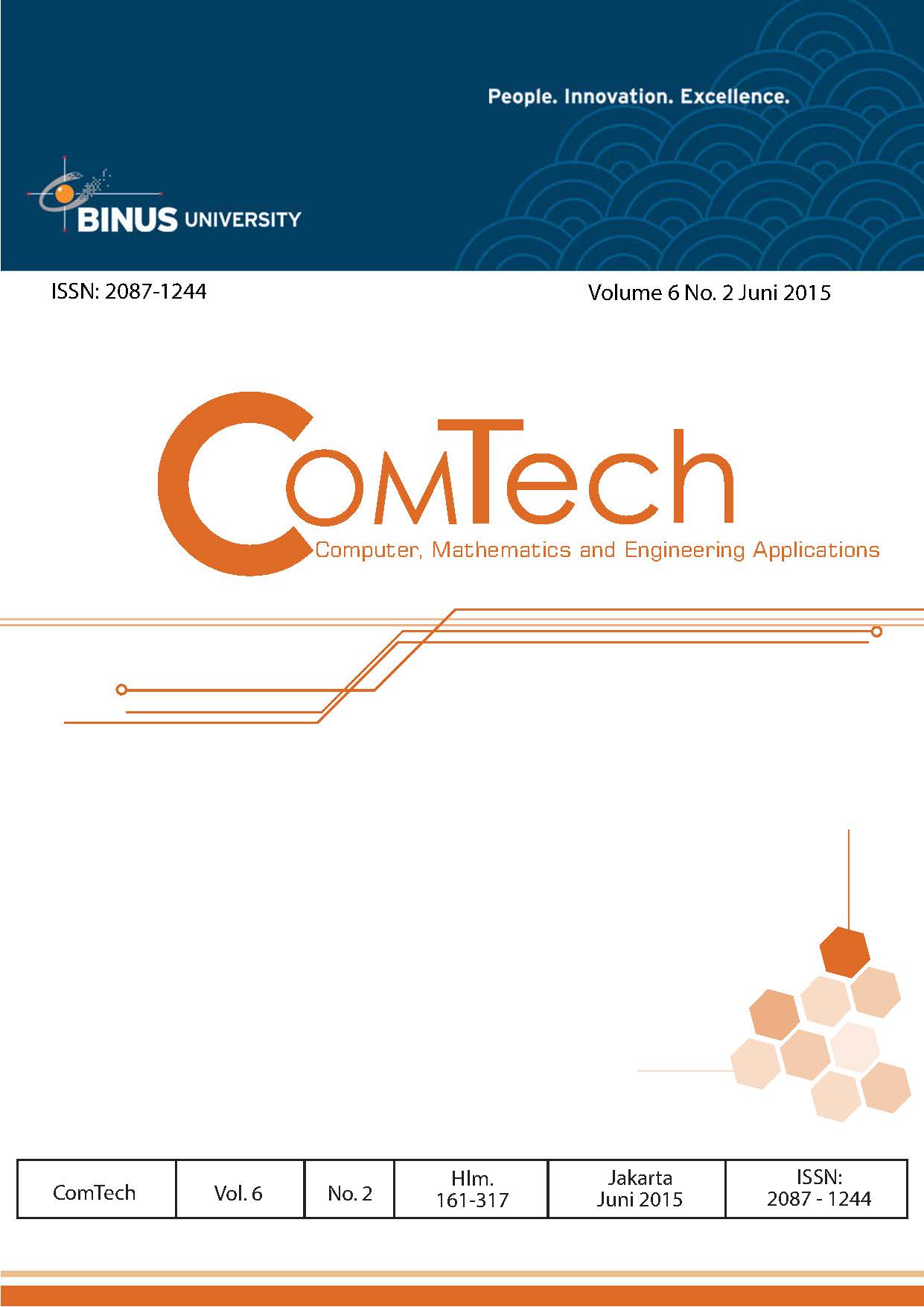QR Code Reader pada Smartphone Android untuk Aplikasi Layanan Restoran
DOI:
https://doi.org/10.21512/comtech.v6i2.2271Keywords:
service, restaurant, QR Code, smartphone, android, applicationAbstract
The development of today's smartphone technology has a huge impact to the world of information technology and telecommunications. The emergence of a variety of applications for smartphones can improve the performance and effectiveness of an activity. Some restaurants have made use of smartphones in the business process, but only as a recording medium order or see a list of menus available in the restaurant. The purpose of this paper is to make the application as a whole that integrated the frontend and backend operations that help the process from ordering food, serving customer to managing restaurant data such as restaurant menus, employees, and transactions. The method used is the method of analysis (study of literature, analysis of similar applications, questionnaires, and interviews) and extreme programming design method. The results of this research is frontend application for food ordering and restaurant service and a backend system that has additional features such as restaurant profiles, restaurant menu data includes descriptions, recommended menu
and images, promos, restaurant rating or menu rating, the waiter call feature, view bill and request features bill. The conclusion of this research is the developed application can help ordering process and restaurant services
process in a restaurant with good customer satisfaction and good application performance.
References
Almarogi, S. (2013). Ruang Lingkup Layanan Makanan dan Minuman. Diakses pada 5 Maret 2014 dari Ilmu Perhotelan : http://www.tasikhotel.com/2013/05/ruang-lingkup-layanan-makanandan.
html
AndroidPIT. (2015). Android Apps Lifestyle QikServe. Diakses pada 10 Mei 2015 dari http://www.androidpit.com/app/com.qikserve
Law, C. & So, S. (2010). QR Codes in Education. Journal of Educational Technology Development and Exchange, 3(1), 85-100.
Napitupulu, Paimin. (2007). Pelayanan Publik dan Customer Statisfiction.Bandung: PT. Alumni.
Ninemeir, J. D., & Hayes, D. K. (2006). Restaurant Operations
Management: Principles and Practices. Upper Saddle River, N.J: Pearson Prentice Hall.
Pressman, R. S. (2010). Software engineering: a practitioner’s approach 7th edition. New York: McGraw-Hill.
Ratminto &Winarsih, A.S.(2005). Manajemen Pelayanan. Yogyakarta: Pustaka Belajar.
Reynolds, D., Merritt,E.A., & Pinckney, S. (2005). Understanding menu psychology: an empirical investigation of menu design and customer responseInt. J. Hosp. Tourism Adm., 6 (1) (2005), pp. 1–9
Shneiderman, B., & Plaisant, C. (2010). Designing the User Interface: Strategies for Effective Human-Computer Interaction (5th Edition). USA: Addison-Wesley.
Sinambela, L. P. (2006). Reformasi Pelayanan Publik:Teori, Kebijakan,dan Implementasi. Jakarta: PT. BumiAksara.
Stark, J. (2012). The 10 Principles of Mobile Interface Design. Diakses pada 5 Maret 2014 dari http://www.netmagazine.com/features/10-principles-mobile-interface-design
Downloads
Published
How to Cite
Issue
Section
License
Authors who publish with this journal agree to the following terms:
a. Authors retain copyright and grant the journal right of first publication with the work simultaneously licensed under a Creative Commons Attribution License - Share Alike that allows others to share the work with an acknowledgment of the work's authorship and initial publication in this journal.
b. Authors are able to enter into separate, additional contractual arrangements for the non-exclusive distribution of the journal's published version of the work (e.g., post it to an institutional repository or publish it in a book), with an acknowledgment of its initial publication in this journal.
c. Authors are permitted and encouraged to post their work online (e.g., in institutional repositories or on their website) prior to and during the submission process, as it can lead to productive exchanges, as well as earlier and greater citation of published work.
 USER RIGHTS
 All articles published Open Access will be immediately and permanently free for everyone to read and download. We are continuously working with our author communities to select the best choice of license options, currently being defined for this journal as follows:




















